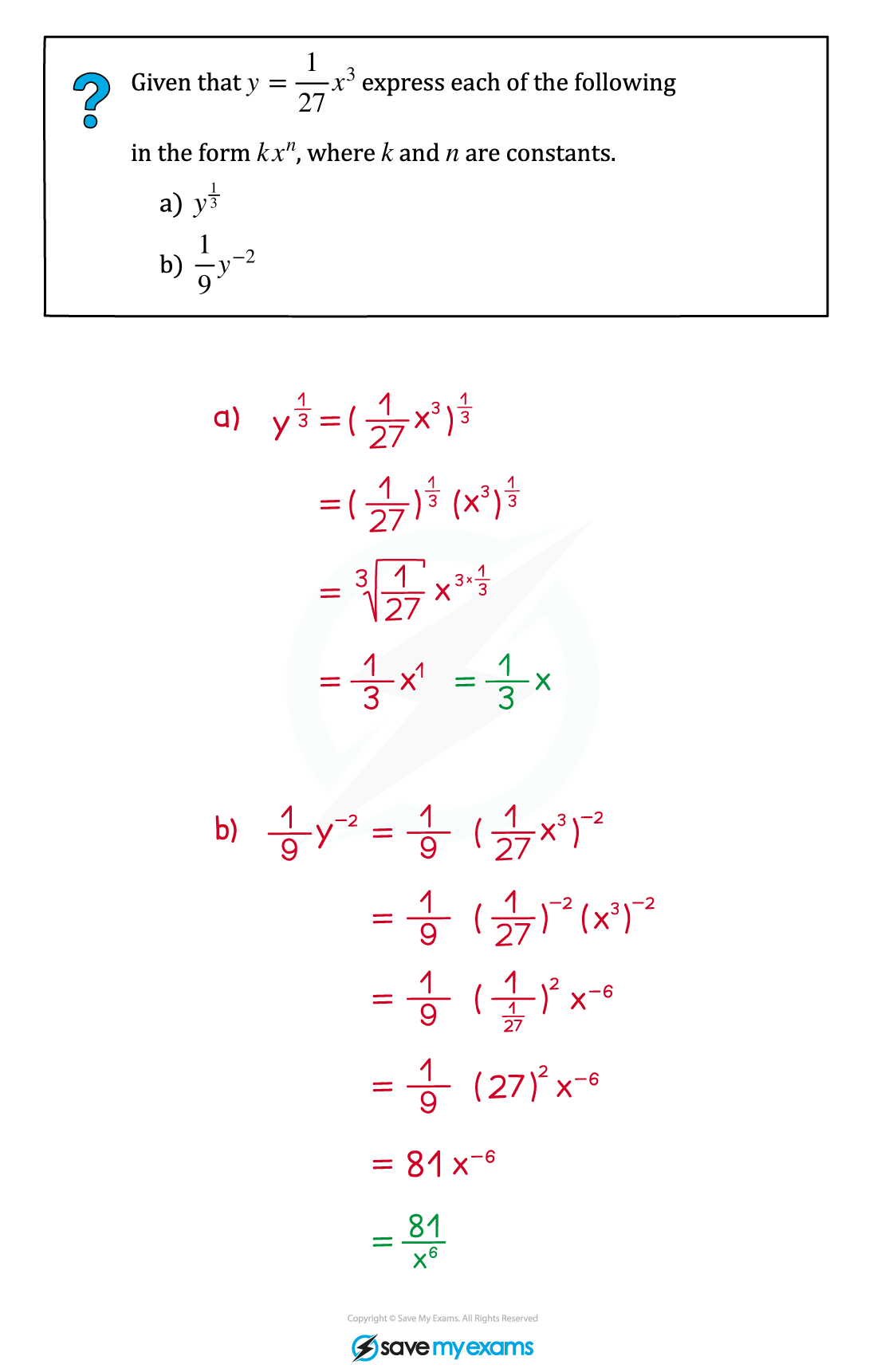Laws of Indices (Edexcel International A Level (IAL) Maths) : Revision Note
Did this video help you?
Laws of Indices
What do I need to know about laws of indices?
Laws of indices (or index laws – 'index' is the singular, 'indices' is the plural) allow you to simplify and manipulate expressions involving powers
The index laws you need to know and use are summarised here:

Changing the base of a term
Sometimes expressions involve different base values
You can use index laws to change the base of a term to simplify an expression involving terms with different bases
For example
Using the above can then help with problems like
Examiner Tips and Tricks
Index laws only work with terms that have the same base, so something like 23 × 52 cannot be simplified using index laws
Worked Example


You've read 0 of your 5 free revision notes this week
Unlock more, it's free!
Did this page help you?
